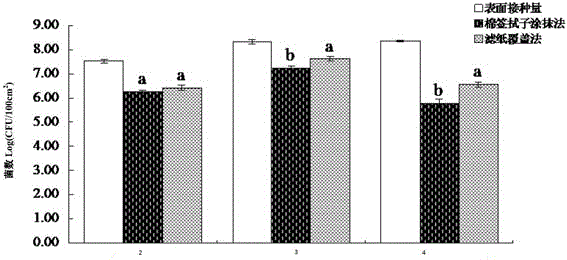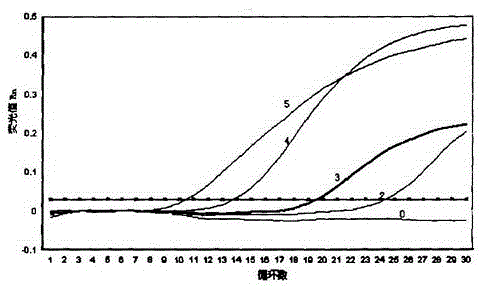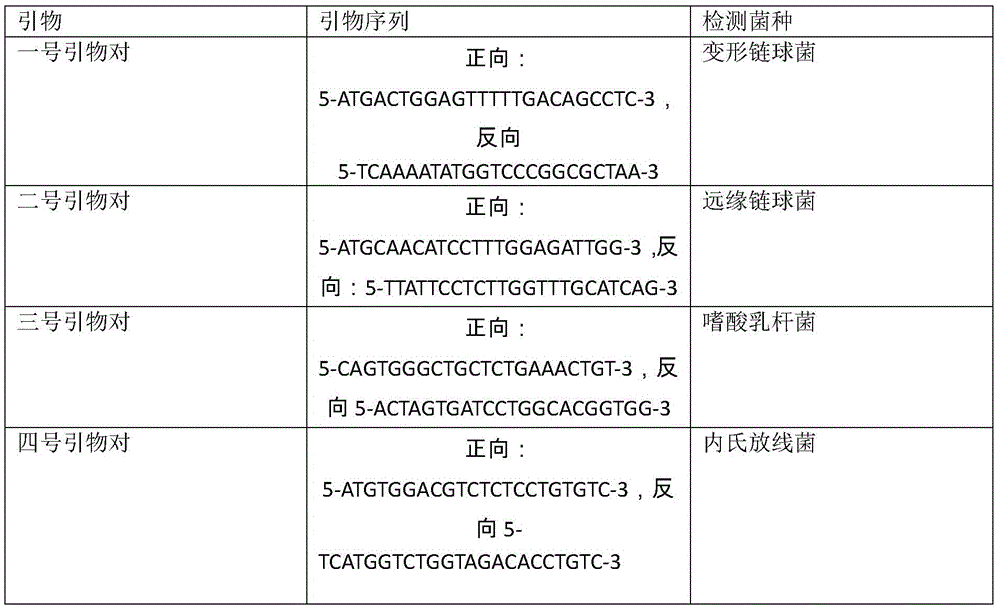Cariogenic bacteria quantitative detection method
A quantitative detection method and cariogenic bacteria technology, which is applied in the field of clinical stomatology, can solve the problem of no obvious correlation between carious actinomycetes and achieve the effect of avoiding PCR pollution
- Summary
- Abstract
- Description
- Claims
- Application Information
AI Technical Summary
Problems solved by technology
Method used
Image
Examples
Embodiment
[0022] The count measurement of caries bacteria consistent with the embodiment
[0023] The target population (150 people in total, including 72 males and 78 females, with an average age of 36.2 years) was used in this dental caries risk assessment model. Two dental professional physicians served as inspectors for oral examination and plaque collection, and relevant data were collected on site.
[0024] Wet sterile dry filter paper (1cm×1cm) or cotton swab in sterile wetting solution, the wetting solution is composed of the following components in mass percentage: peptone 0.1%, surfactant 0.1%, sodium chloride 0.85% , the balance is water;
[0025] Use sterile tweezers to take out the wetted filter paper and spread it over the plaque on the buccal surface of the test subject, and stop for 30 seconds to take a sample. Or scrape the surface of plaque on the buccal surface of the teeth with a cotton swab.
[0026] Contact surface microorganism detection method, the steps are as...
Embodiment 2
[0034] A PCR reaction system is designed for each bacterial species, and probes corresponding to the corresponding bacterial species are provided in each PCR reaction tube.
[0035]
[0036] Synthesize the template sequence corresponding to the genotype of the detected strain first, connect the primers to the template sequence, and then use the RNAntpmix labeled with digoxigenin to label the synthesized sequence, so as to complete the probe.
[0037] The DNA of four cariogenic bacteria extracted according to the TIANampBacteriaDNAKit kit was put into the corresponding PCR reaction system, and the reaction system of each strain was established in a single PCR reaction tube; PCR amplification was performed, and the corresponding amplification was recorded Curve; compare the obtained amplification curve with the standard curve, and calculate the template quantity of the sample. Simultaneously record the ratio values of the four bacterial species this time, and combine them w...
Embodiment 3
[0039] Embodiment 3 Combined with the ratio of cariogenic bacteria, draw the corresponding dental caries risk assessment table (LogC is based on 10)
[0040] Table 1 Risk Assessment Form
[0041]
[0042]
[0043] Recent evaluation results:
[0044] The caries risk assessment model was used to assess the caries risk of the target population (a total of 150 people, including 72 males and 78 females, with an average age of 36.2 years). There were 101 low- and medium-risk people and 49 high-risk people. Longitudinal The study conducted a follow-up review after 6 months and 12 months respectively to evaluate the actual new caries of the target population at 6 months and 12 months, and evaluate the effectiveness of this caries risk assessment form. The result is as follows:
[0045]
[0046]
PUM
 Login to View More
Login to View More Abstract
Description
Claims
Application Information
 Login to View More
Login to View More - R&D
- Intellectual Property
- Life Sciences
- Materials
- Tech Scout
- Unparalleled Data Quality
- Higher Quality Content
- 60% Fewer Hallucinations
Browse by: Latest US Patents, China's latest patents, Technical Efficacy Thesaurus, Application Domain, Technology Topic, Popular Technical Reports.
© 2025 PatSnap. All rights reserved.Legal|Privacy policy|Modern Slavery Act Transparency Statement|Sitemap|About US| Contact US: help@patsnap.com



